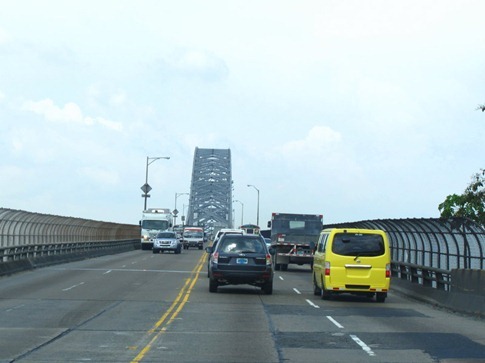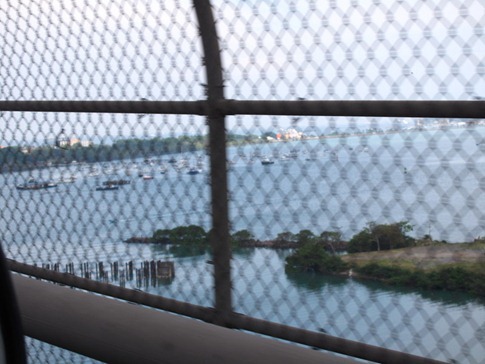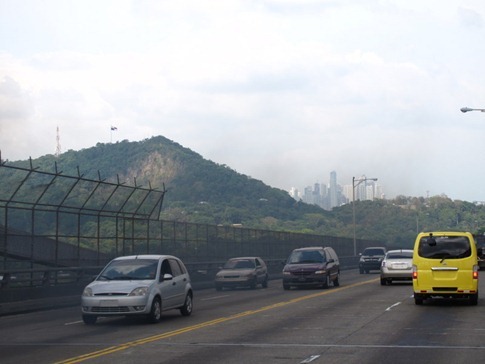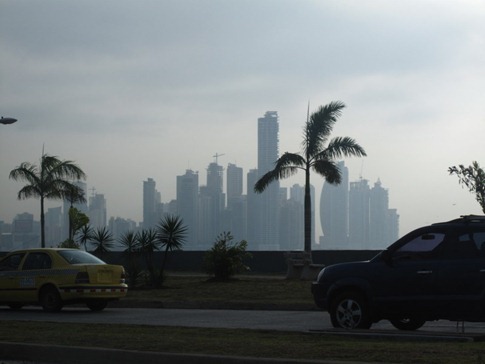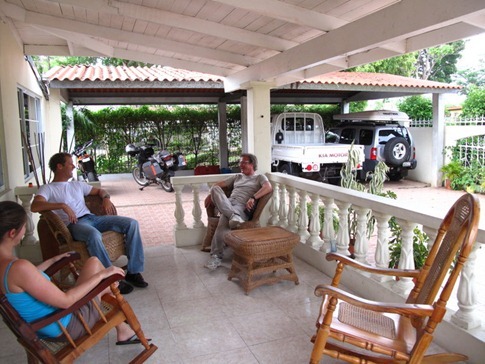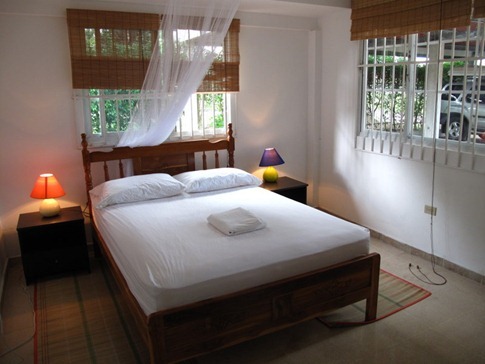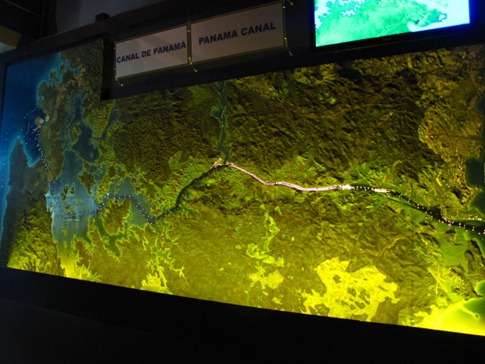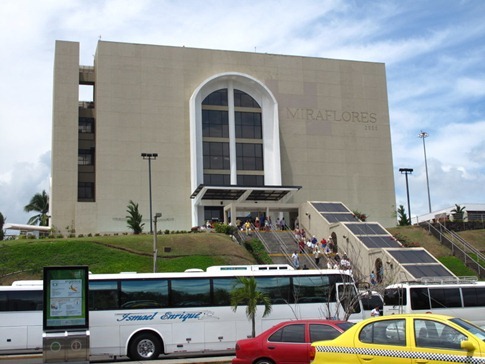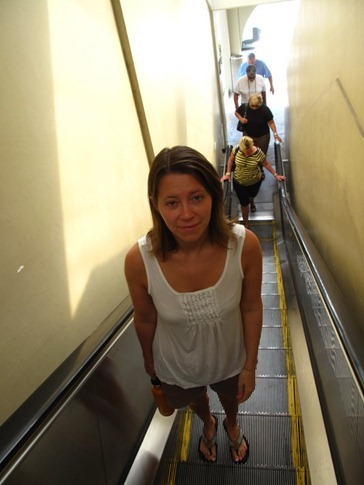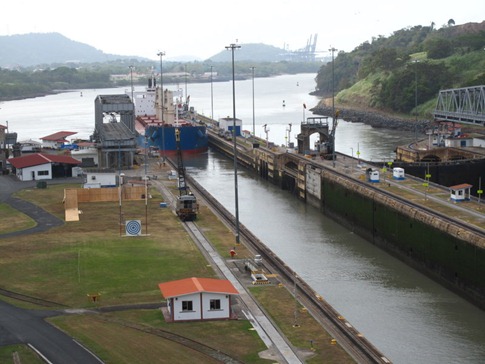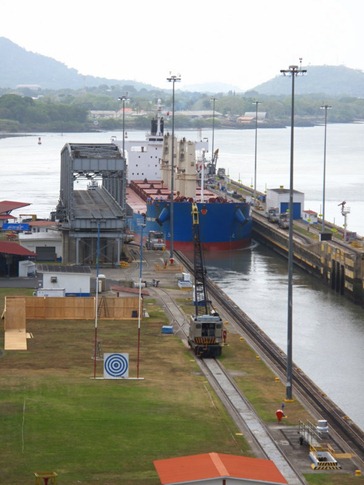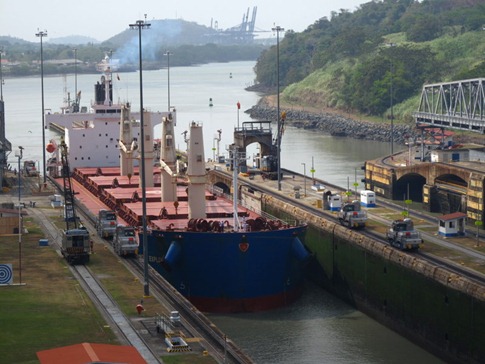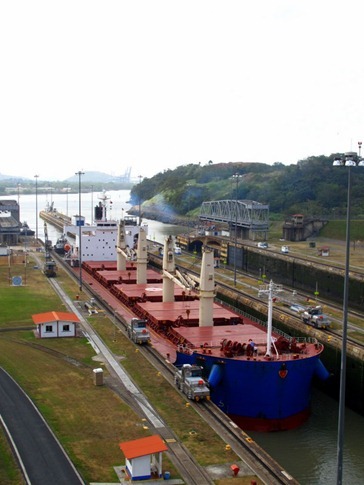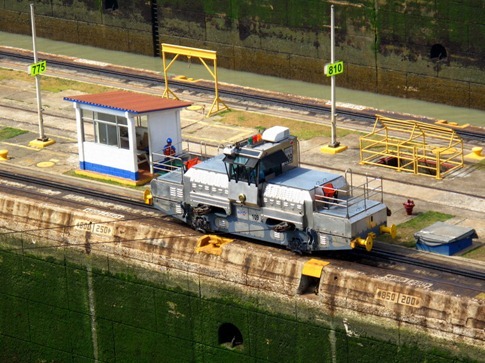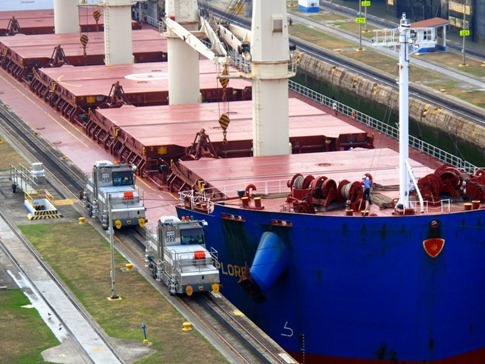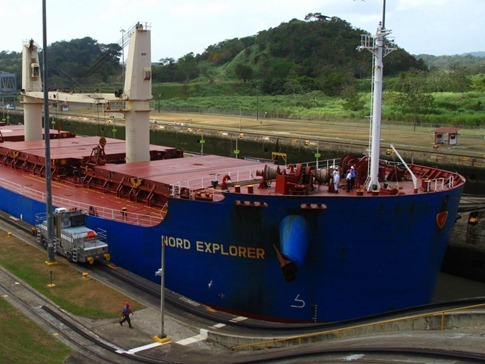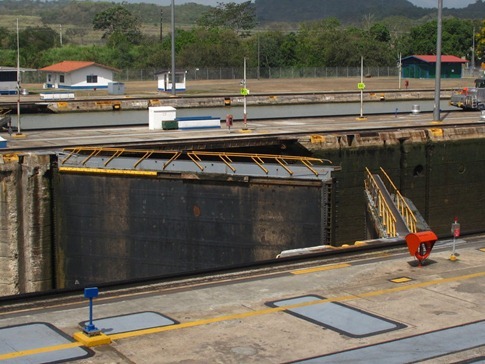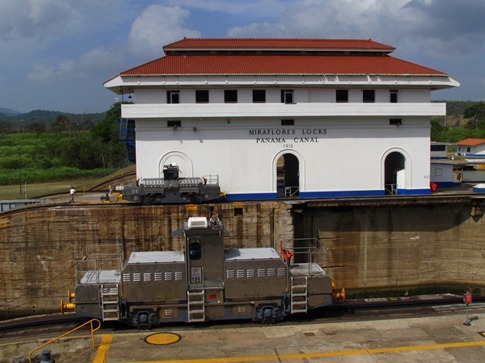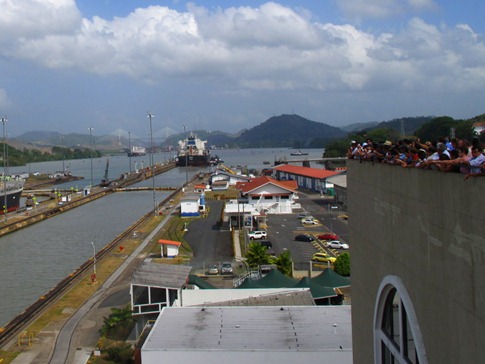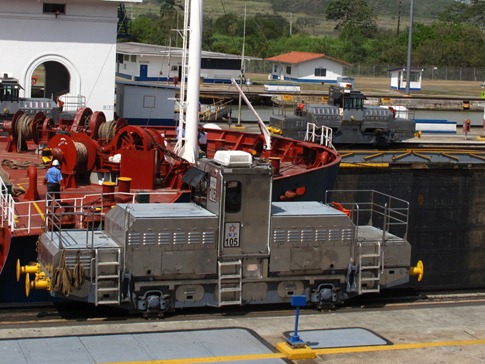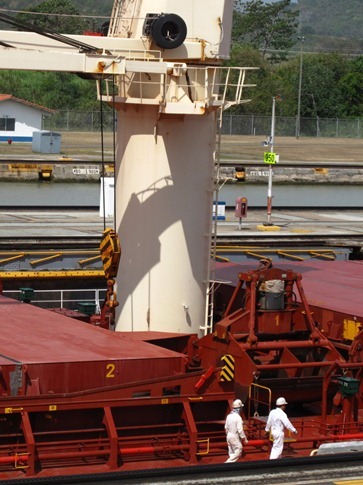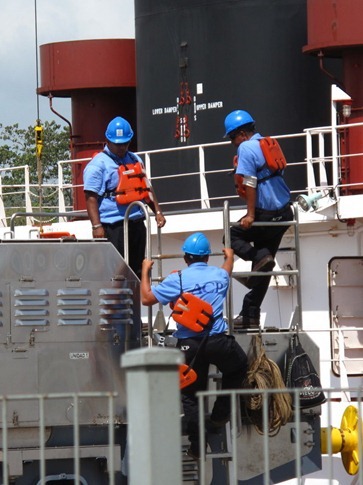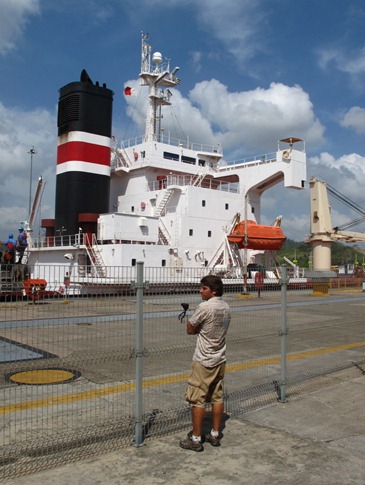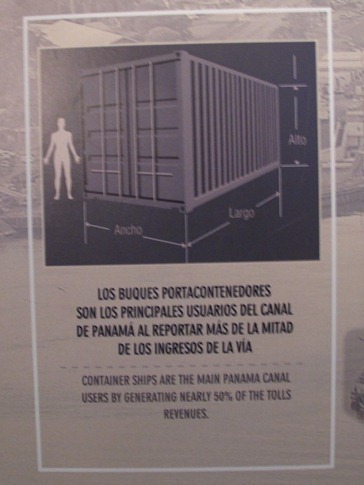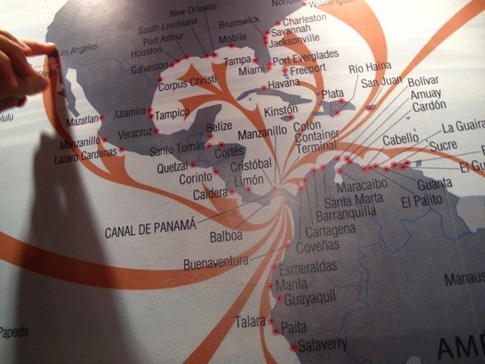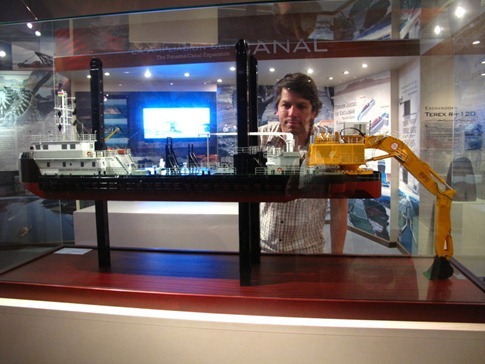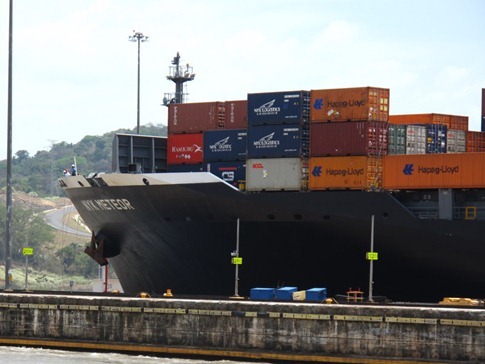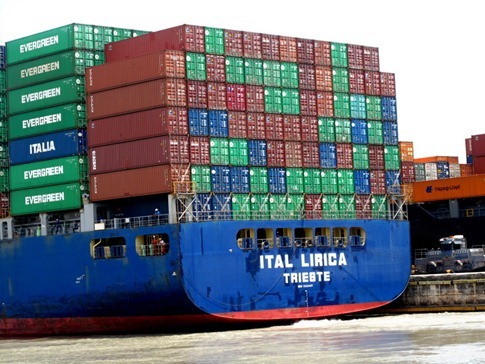The Panama Tourist Board recommends not thinking about that song from the Muppets where a scruffy guy with an orange beard says something that sounds like “phenomena” and two fluffy pink cows respond with a “du du” melody while driving anywhere near the city of Penomene. It further warns that if this song somehow does enter your mind after 9,980 miles and 5 months of driving the Pan American Highway with the same person, it’s best not to resist it. Of course, they advise occasionally switching off who gets to do the “phenomena” part.
According to my favorite source for Muppet information, Muppet Wiki – frankly the others don’t even deserve a mention – the song was originally written by Piero Umiliani for an Italian documentary about life in Sweden, and the lyric, “mah-na mah-na,” is nonsense. The song gained popularity after a Muppets sketch on the Ed Sullivan show in 1969 and was used on the fist episode of the Muppet Show. Most recently, it was modified for a sketch in which Sandra Bullock played a psychiatrist treating Kermit because he’d hear the song every time he said the word “phenomena.” Well, that’s about all I have to tell you about Panama City…
Actually, the drive from El Valle was pretty uneventful, looking more and more like any highway in the rural US; Big box stores, fast food restaurants and huge developments with identical houses arranged in neat grids became a common sight. Before we knew it, we were on the Bridge of the Americas, one of only a handful of bridges that connect the northern and southern landmasses. Unfortunately, pictures from the bridge are not particularly impressive.
We followed the directions to Panama Passage in a nice neighborhood a lot like the Presidio in San Francisco – probably because both had been designed to house US military officers – called Ancon, not far from the bridge. We were greeted by co-founder, Shaun, a fellow San Franciscan we’d met up with in Zipolite when he was on the way down to start up the business. With gated parking, 4 rooms of varying sizes, a living room and a communal kitchen, the place immediately felt like home. We lounged around in the rocking chairs on the front porch for the rest of the day, checking email and waiting for a final response from our shipping agent; It being the weekend, we didn’t expect to hear from him for a couple days.
That evening, we said we’d meet Shaun down in Casco Viejo, the historic part of Panama City, for dinner. He’d explained to us where to walk to find a taxi but also cautioned that a couple blocks in either direction would put us in particularly bad neighborhoods. We left a little early, thinking we’d get a drink in a scenic colonial square before we met Shaun. After a few minutes without seeing a cab on one corner, we decided to walk towards a busy street a couple blocks away. Wait, which way did he say not to walk?
When we finally got a cab to stop, he rolled down his window just a crack and tilted his head as if to say “Yes, what can I do for you?” Well, you’re a cab, right? “Casco Viejo!” I yelled towards the slit in the glass. He shook his head and sped off. Huh. We repeated the same process with a couple more cabs, some with people already in the back. Finally, one guy nodded and looked at us with an expression that said “Well? I’m a taxi aren’t I? Get in already!” Turns out, these guys operate a little more like a bus but make their routes up as they go; They stop and poll anyone waiting for a cab, then make a snap decision about how that fits into their plan.
Tonight, we had the cab all to ourselves. As we approached Casco, he warned us about the neighborhood we were passing through. I swear as soon as he said it, it felt like we drove into a zombie video game; People in tattered clothes dragged their feet along the sidewalks, stopping to stare off into the distance or turning to walk into traffic without warning. Garbage lined the streets and laundry fluttered tauntingly from the six-story brown buildings with black metal fire escapes that seemed to be distorting in above us. When a figure stopped in the middle of the street, wincing in the bright beam of the headlights, I half expected the driver to pull out a shotgun and shoot him through the window. Instead he just said, “You see? They’re all crazy down here.”
As we entered Casco Viejo, he pointed out the heavily-armed, military- looking guards standing on several corners and assured us that as long as we saw those guys, “guardas,” we were safe but that we shouldn’t walk back the way we’d come. At that point, we really just wanted to have a drink, meet Shaun for a pizza and get the hell out of there. From what we saw, there were some nice restaurants and plazas but, particularly after dark, the area felt a little like I’d imagine a “Green Zone” in a war-torn city. I’m sure there’s more to it, but sorry, we were too scared to take out our camera.
You can check out your favorite Wiki, Muppet or otherwise, for all the info on the Panama Canal - and there was a lot I didn’t know about it - but it was definitely one of those things we felt like we had to go see. Traveling from the Atlantic to the Caribbean, the passage is actually almost north to south since Panama runs looks a bit like a sideways “S” at that point; The canal cuts only 48 miles across its middle. After passing under the Bridge of the Americas, boats are lifted two times at the Miraflores Locks before they reach the level of the man-made MIraflores Lake. When the lake was flooded, much of the wildlife took refuge at the high point which became Barro Colorado Island, now an isolated refuge of countless species of plants and animals.
The Pedro Miguel Lock lifts them again to the Galliard Cut, an 8 mile section where the French had started work to dig the canal all the way to sea level; They made about 5 meters of progress but still had 59 to go before abandoning efforts due to widespread disease among the workers and waning confidence in the project. About 20 years later, the US took over and was able to lower the valley by another 47 meters over 12 years of construction, so it could be accessed via the lock system. The cut is the highest point on the canal at 26 meters over sea level; Damning the Rio Chagres on the far side of the Continental Divide formed Gatun Lake which rises to meet the cut. Three drops at the Gatun Locks bring ships back to sea level.
The Miraflores Locks are the most commonly visited. Ann really seemed to enjoy the “Lock Simulator” near the entrance. I couldn’t bring myself to tell her it was just the escalator.
As luck would have it, a large ship was entering from the Atlantic side as we arrived, and we rushed up to the observation deck with the rest of the tourists.
As soon as the vessels are in this entry channel, they are maneuvered via heavy locomotives hooked into tracks along either side that function as moving cleats. Operators are constantly adjusting their speed and reeling cable in and out to control the huge ship in concert with the other land tugs.
Once in position, a huge steel gate is closed at the far end and the lock is flooded, floating the ship up to the next level. As I understand it, the water flows downhill from Miraflores Lake,using only gravity to lift the ship, before being released into the Atlantic. Future lock designs are in process to used a closed system, recycling the water each time the locks are filled.
With the ship floating at the level of the next lock, the gates are opened and the tugs pull the boat through where the process is repeated. Seeing it in action, it seems like such a simple system, though building the lock gates to withstand that amount pressure is an incredible feat.
I ran a ton of video of the process with my ContourHD cam on the magnetic GorillaPod, but you’re going to have to wait for the next post to see it compiled…
Inside the museum, the short movie about the canal in the theater had a strange tone; It started out very pro-American, detailing the successes of building the canal, but then seemed to turn dark in its description of our invasion to remove Noriega in 1989. It sounded a little like they wished we’d minded our own business. This may come as a surprise to people who have been reading this blog from the beginning, but just about all of what I know about Noriega comes from a podcast of “This American Life.” Check out one called “Pen Pals” about a little girl in the US who writes a letter to Noriega saying she likes his Panama hat and ends up accepting an invitation from the dictator to come to Panama as her guest – and political pawn?
In the museum, we took a few minutes to familiarize ourselves with the details of our upcoming shipping process.
That oughta do it.
We drove a little farther up the canal to the Pedro Miguel Locks and had a pretty terrible $15 burger at a fancy resort overlooking some of the inland waterways, but it was fun to think we were driving along the canal.
Back at Panama Passage, we settled in to wait for a response from our shipper, trying to come up with interesting things to cook with the food we had remaining in the truck; That night was a really good tuna casserole with instant blueberry muffins we’d gotten in Belize for dessert.


